GAT Systems FAQ
About Custom Finishing Systems
How long does a custom line take from PO to production?
Typical timeline is 26–32 weeks, depending on scope and approvals.
Can you retrofit my existing conveyor or oven?
Yes—our engineers can integrate new washers or booths into legacy equipment to maximize ROI.
What coatings can your systems handle?
TGIC‑free polyesters, epoxies, urethanes, primers, liquid urethanes, enamels and more.
About Initial Consultation
Is the consultation really free?
Yes—there’s no cost or obligation. Our goal is to determine if a GAT system is the right fit.
Do I need detailed prints of my parts?
Not at this stage. Basic dimensions and weight are enough to start the conversation.
Can you advise on powder vs. liquid paint?
Absolutely. We’ll compare finish performance, operational cost and sustainability for your parts.
About Proposal and Drawing
How accurate is the budgetary quote?
Our proposals use firm supplier pricing; final costs rarely vary more than ±3 % after contract.
Can you share native SolidWorks files?
Yes—under NDA we provide .sldasm and .sldprt files for your engineers.
What if my plant utilities change?
We’ll re‑run load calculations and adjust burner sizes or electrical panels before fabrication starts.
About Validation Visit
How long is the site visit?
Most validations require 6–8 hours on site, depending on facility size.
Will production need to stop?
Rarely. Our team works around your shifts and hot zones to minimize disruption.
Who should attend?
Facilities, EHS, maintenance, production and anyone signing off on utilities or safety.
Is there a cost for the visit?
Site validations are included in the proposal phase for qualified projects inside North America.
About Purchase & Engineering Timeline
How are payments structured?
Typical terms: 30 % PO, 30 % design freeze, 30 % FAT approval, 10 % shipment.
What if I request a design change after freeze?
Change orders are priced and added to the Gantt chart with adjusted ship dates before work proceeds.
Can you accelerate the build?
Yes—overtime shifts and parallel fabrication can compress the schedule if critical parts are available.
About Installation & Operator Training
Do I need to provide riggers?
GAT can supply a full‑service install crew or work alongside your preferred riggers.
Will production stop during install?
We stage work to minimize downtime; many lines install in segmented areas without full shutdown.
What if issues arise after start‑up?
Remote PLC access and a dedicated support line connect you to engineers within minutes.
About SUPPORT & MAINTENANCE
Is remote access secure?
Yes—communication uses AES‑256 encryption and whitelisting; the VPN is only live when you enable it.
Can you service non‑GAT equipment?
We routinely retrofit and maintain third‑party washers, ovens and conveyors when integrated with GAT lines.
What if my plant requires a weekend visit?
Premium PM plans include Saturday/Sunday scheduling at no extra charge.
About Polypropylene Washers
How hot can a PolyPro washer run?
Standard tanks operate to 150 °F; high‑temp options available.
Is polypropylene strong enough for heavy production?
Yes—the housing is reinforced with stainless steel framing for industrial duty.
What chemistries are compatible?
Iron phosphate, zinc phosphate, nano‑ceramic, alkaline degreasers, mild acid etches and more.
About Batch Ovens
Can the oven run wet paint & powder?
Yes—simply program separate ramp‑hold recipes for each coating.
What power & gas are required?
Standard models: 480 V / 3‑phase / 60 Hz, natural gas 2–5 psi; other utilities on request.
How do you ship large ovens?
Panels knock down to skid-size; reassemble with cam‑lock hardware – no welding.
About Process Ovens
Can one oven handle multiple coating chemistries?
Yes—store separate time/temp recipes for polyester, epoxy, urethane or liquid paint.
How long can the oven run without maintenance?
With quarterly filter changes and annual burner tune‑ups, uptime exceeds 98 %.
Do you offer electric convection?
Absolutely—SCR‑controlled heaters available where gas is limited or ESG mandates apply.
About Infrared Process Ovens
Can IR ovens replace my entire convection cure?
Often yes—gas catalytic IR achieves full crosslink on most polyesters and urethanes. Hybrid combos available for heavy steel.
Are electric IR elements expensive to run?
Because elements duty‑cycle only when parts are present, total kWh is typically lower than a continually fired convection oven.
How often do elements need replacement?
Quartz SW elements average 12,000 hrs; catalytic pads 20,000+ hrs. Both swap in < 15 min.
About Convection Process Ovens
Can the same oven cure multiple coating chemistries?
Yes—store separate time/temperature recipes for polyester, epoxy, urethane, or liquid enamel.
Is electric convection available?
Absolutely—SCR‑controlled electric heaters where natural gas is unavailable or ESG targets dictate.
What maintenance is required?
Quarterly filter changes and annual burner tune‑ups keep uptime above 98 %.
About GAT Conveyors
Can I upgrade a legacy conveyor with power‑and‑free sections?
Yes—our modular P&F drives splice into existing ET or I‑Beam track with minimal downtime.
Do you supply hangers and tooling?
Absolutely—custom racks, hooks and load bars engineered for your parts.
How often does the chain need lubrication?
With auto‑lube, chain service intervals stretch to 2,000 hours; manual systems need weekly checks.
About Powder Coating Rooms
Can I retrofit a GAT room to my existing conveyor?
Yes—custom pass‑through openings and vestibules attach to most ET or I‑Beam tracks.
Do you supply spray guns and control packages?
We integrate Nordson®, Gema® or Wagner® systems—your choice.
How often do filters need changing?
Cartridge filters average 2,000 booth hours; ΔP alarms prompt change‑out.

